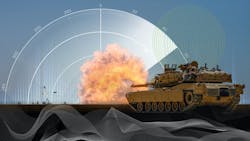Army wants target recognition and detection algorithms with machine learning for armored combat vehicles
WARREN, Mich. – U.S. armored combat vehicles experts are reaching out to industry to find companies able to use machine-learning algorithms to reduce the time it takes to detect, recognize, and attack enemy targets.
Officials of the U.S. Army Tank-Automotive & Armaments Command (TACOM) in Warren, Mich., released a request for information (W56HZV_AiDTR_RFI) this week for the Aided Target Detection and Recognition (AiTDR) project.
AiTDR seeks to shorten sensor-to-shooter engagement time with machine learning algorithms. The RFI seeks to understand the state of aided target recognition technology to detect trained and untrained new targets.
Traditional machine learning techniques focus on aided target recognition, Army researchers say. This requires a large training image database of target images captured under conditions such as background terrain, target pose, lighting, and partial occlusion. This limits the ability to detect new targets or trained targets under untrained new conditions.
The emphasis of the AiTDR project is on detecting generic classes of targets, rather than on identifying specific targets with the risk of missing a target because of insufficiently trained algorithms.
Achieving this will help accelerate engagement times and optimize crew performance by developing reliable, intuitive, and adaptive automated target detection for crewed vehicles by no later than 2026.
Related: The future of high-performance embedded computing
Armored combat vehicle crews need target detection and recognition capability they can depend on, regardless of mission, vehicle status, and environmental conditions. Crews also need the ability to task, operate, update, and troubleshoot detection without degrading their performance.
Companies interested should answer a list of 32 questions, which can be downloaded at https://sam.gov/api/prod/opps/v3/opportunities/resources/files/c274b4382c0e4486abb4efaa739d8009/download?&token=.
Companies should email responses to this RFI no later than 12 Jan. 2024 to the Army's Ashraf Samuel at [email protected] and Edlira Willer at [email protected]. More information is online at https://sam.gov/opp/d3ddaa9d736a4fcab76a0ae5cdf5a6cd/view.
